As crucial as it is for our health and wellbeing to seek quiet, connection, or contemplation, it is increasingly hard to break from the frenetic pace of life today. The noise is deafening. The pings as I type this post are coming through on my cell phone, my office line, and my computer’s chat app… and I’m not even paying attention to my emails. Swiss philosopher Max Picard said, “Nothing has changed the nature of the world as much as the loss of silence.” That was a half a century ago. What would Max Picard say today?
Personally, I need all the help I can get to take a moment, take a breathe, and to practice gratitude for the people I collaborate with at work, the still so tiny hand of my child that I’m holding, or the sun on my face. Henry David Thoreau poses a simple yet challenging goal, urging us to “awaken to the divinity of the present moment.” The people we choose to spend our time with and the activities, both quantity and quality, we choose to engage in either support or detract from this quest. And, based on the design and construction industry that I’ve lived and worked in for nearly 20 years, I am intrigued by how we might look to our surroundings in the built environment to help us.
Which leads me to a question we ask ourselves often at Vera Iconica, how can the homes and buildings we spend our daily lives in prompt us to slow down and reconnect with what inspires us and gives a sense of purpose? In other words, how do we make space, both in our lives and architecturally, for numinous moments that restore us, and what is the link between the two?
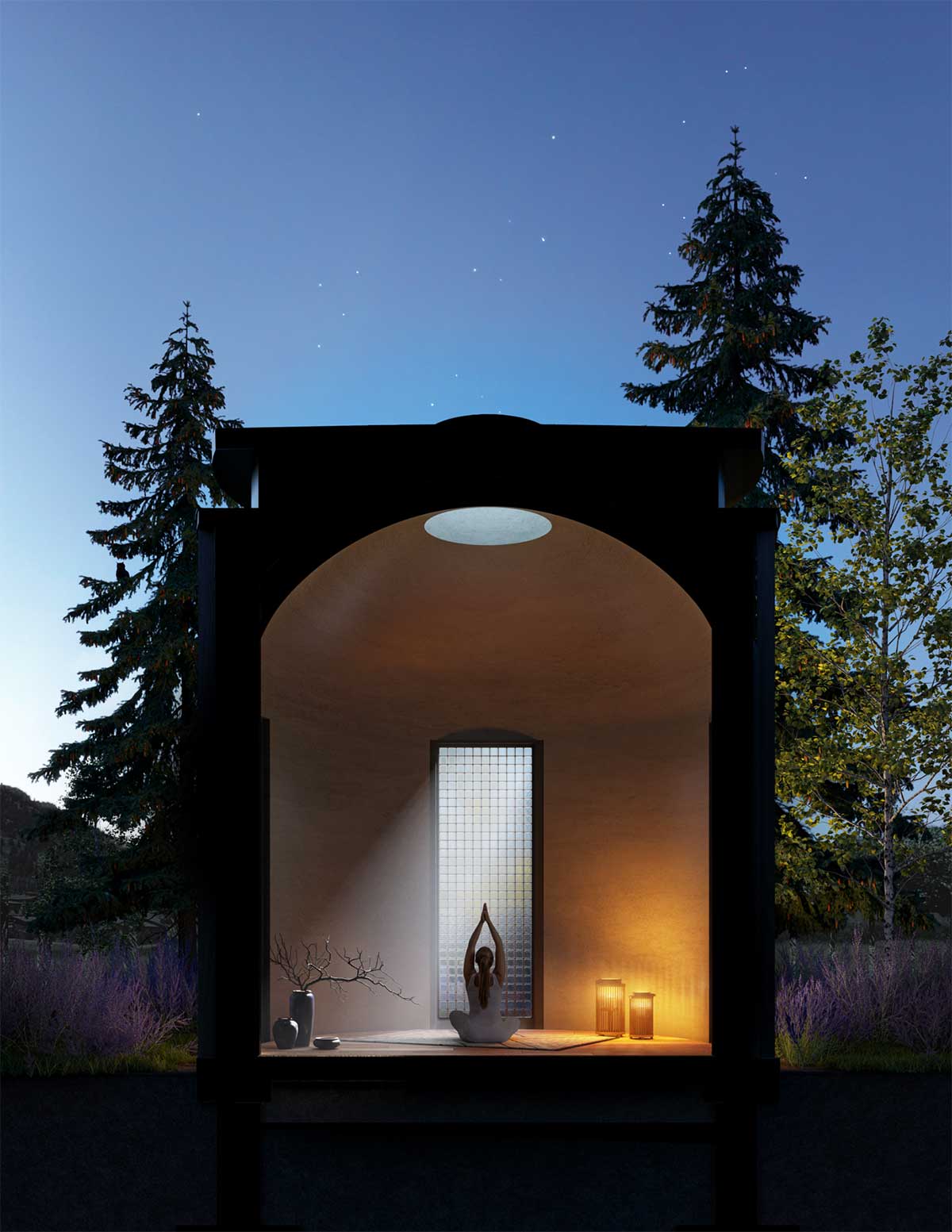
What is Sacred or Spiritual Architecture?
Spiritual architecture has been defined as a space “to invite, symbolize, host, or prepare for the sacred.” Citation: Transcending Architecture
I’m most interested in the term ‘sacred.’ While it usually appears in a religious context, sacred can also refer to an object or place set aside for a particular purpose. This concept points to a possible solution to our aforementioned challenge: How can we create sacred places in our everyday lives for the purpose of connecting to what is more important to us?
Taking that thought a step further, our friend, Dr. Phillip Tabb, has contributed the idea of “thin places,” which are moments in architecture where the veil between the secular realm and the sacred is thinned in order that we might have an experience of elevated consciousness, connection to higher purpose or pursuits, and inspiration or even epiphany on how we might elevate our way of living or being. Citation: Thin Place Design
How better to connect to what is important to us than in an environment Dr. Tabb describes?
Sacred Architecture: A History
Sacred architecture is certainly not new. For 12,000 years, spanning the world’s well-known religions and beyond, humans have found and built sacred places. The Göbekli Tepe temple in southeastern Turkey is thought to be the world’s oldest human-built holy place, humanity’s first “cathedral on a hill.” The massive arranged stones predate Stonehenge by 6,000 years. The coordinated effort to arrange the monoliths in support of what is speculated to be spiritual endeavors literally laid the groundwork for the development of their society, eventual farming, and animal domestication. If such a notion is true, civilizations have been quite literally built upon spirituality, represented by their spiritual architecture. Their congregation, ceremonies and/or worship were not an afterthought but rather a foundation of their societies. Citation: Smithsonian
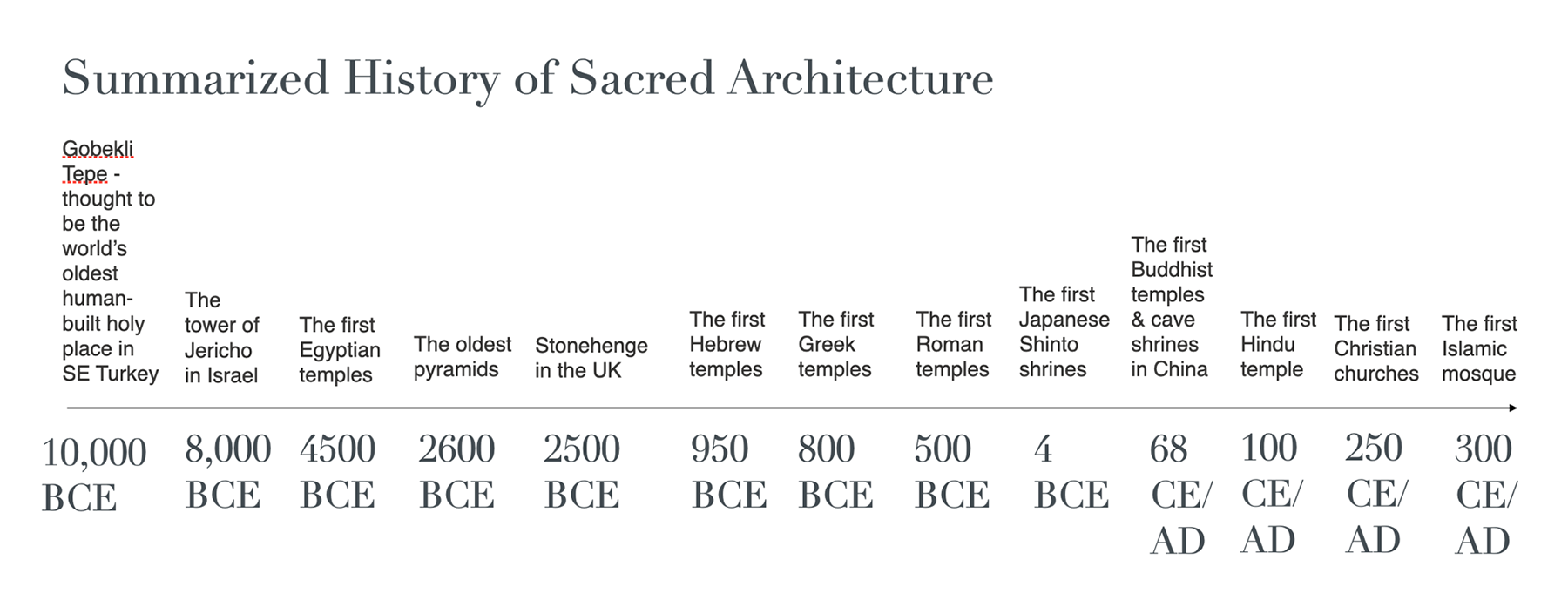
Finding Spirit in the Secular
While many examples exist in religious history across the world, spiritual architecture, as suggested with the term “sacred,” transcends religion. Julio Bermudez states that “the only difference between religious and spiritual sacredness is that religious sacredness is simply a space, object, or ritual that has been specifically named or designated beforehand. Secular sacred architecture may be represented artistic work is a personal and individual existential experience.” Citation: Transcending Architecture
An example to consider is the modern-day art museum. It has been said that the art museum is a textbook modern-day example of secular spiritual architecture, and art museums have been suggested to be the late 20th century cathedrals. Other recognized secular examples include learning institutions, such as the Salk Institute in San Diego, California, as well as examples that are not buildings at all but rather gardens, forests, or rock outcroppings.
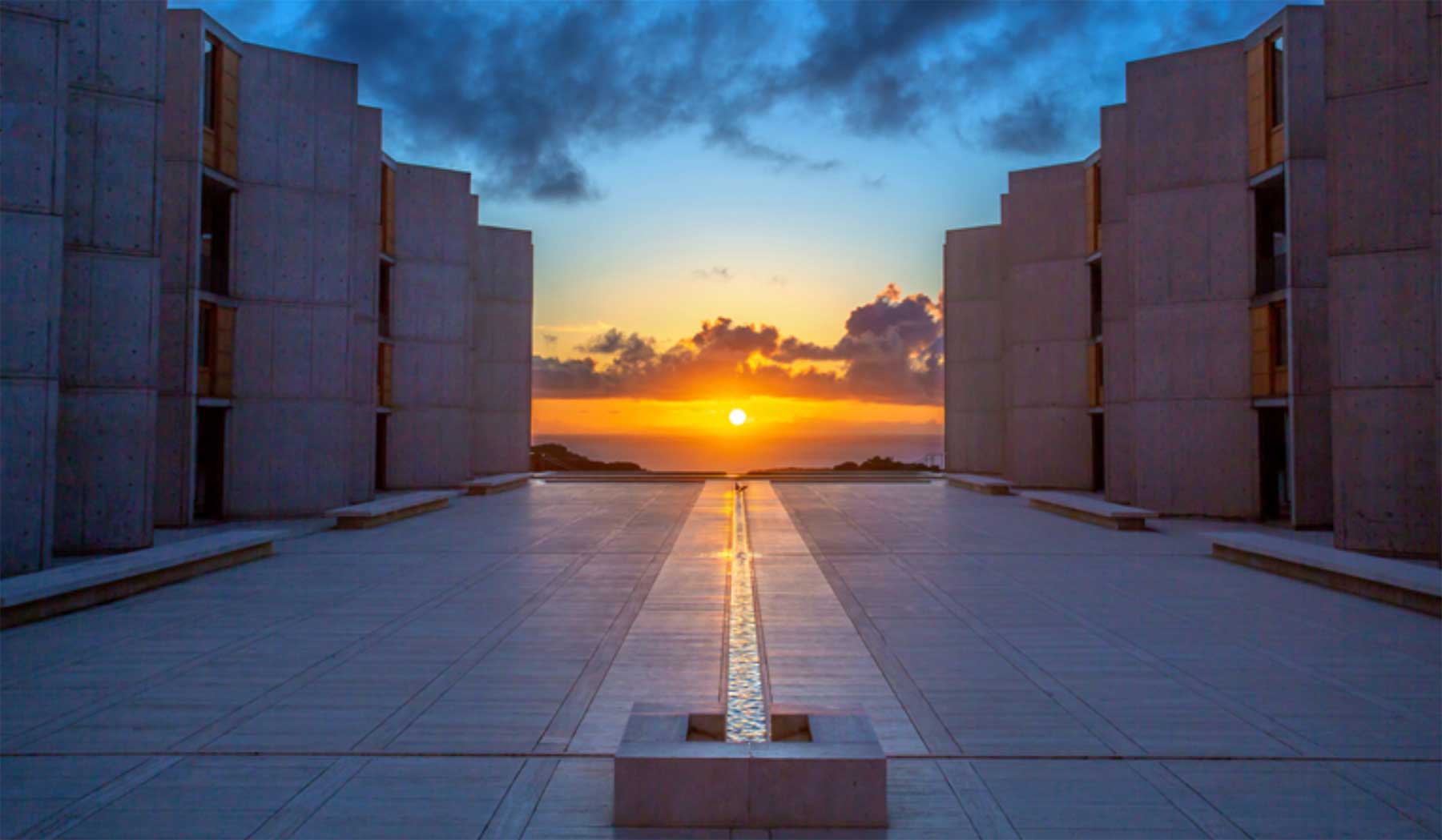
Purpose of Spiritual Architecture
Abraham Maslow’s well-known Hierarchy of Needs offers a psychological explanation of the innate human desire seek spiritual fulfillment. No matter the religion or spiritual affiliation, spiritual architecture provides space for functions that move a human in the upward direction of the triangle.
Worship, ceremony, congregation or gathering, and teaching (often through storytelling and symbolic reminders) are commonly recognized practices within spiritual architecture and arguably inspire feelings of safety, love, belonging, and esteem. The simplicity of spiritual functions such as contemplation, serenity, and meditation move us further up the triangle toward goals of revelation, clarity, and meaning. Peering scientifically into how our surroundings can move us toward the upward reaches of the triangle, studies have shown that “sacred places shut down the frontal lobe, similar to the effects of meditation, allowing you to enter a non-dualistic state—your highest state.” Citation: Transcending Architecture
This, of course, is represented by the pinnacle of Maslow’s triangle: self-actualization and self-transcendence
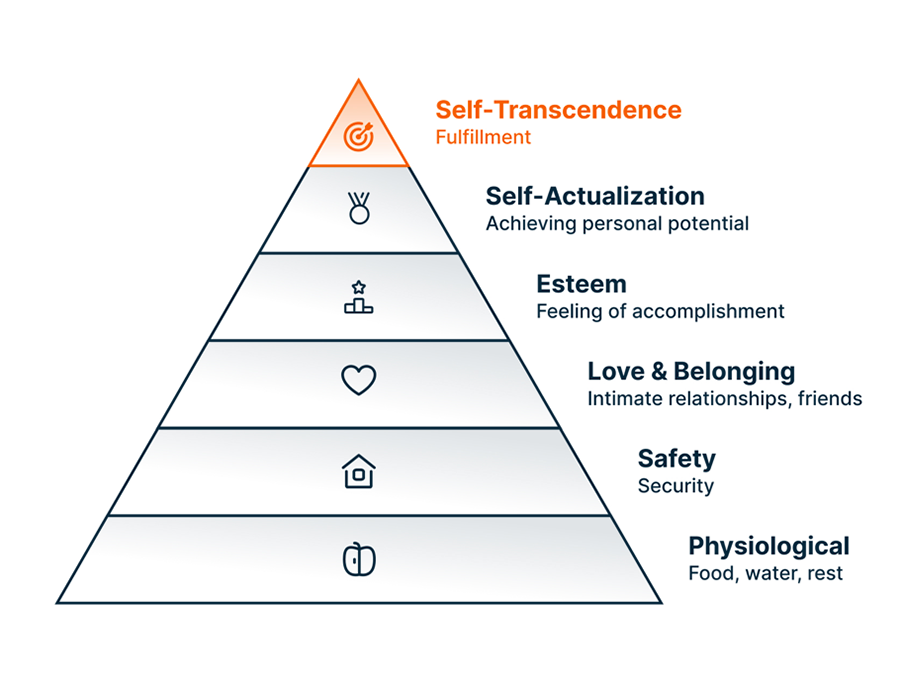
Design Techniques
Surprisingly, architectural designers and builders have approached spiritual architecture in a similar way for 12,000 years. Mystery and the highly subjective concept of beauty are essential qualities of spiritual architecture, and the techniques used toward these ends are quite consistent. Whether stemming from historic significance or symbolism, place is an important factor. Other important techniques include building orientation and geometry, the latter oft thought to be sacred in certain volumes, proportions, and conditions of symmetry.
All of the human senses are tremendously important in spiritual architecture: Light, shadow, and expansive views (a glimpse of sun, stars, the horizon, or a natural vista of ocean, gardens, or forest) satisfy our sense our sight; music, chanting, or, alternatively, silence serve sound; incense, flowers, or the aroma of rich materials serve our sense of smell; a ceremonial sip of wine or ritual meal serves taste; and touch may be served by an anointment of water, ghee, or oil. These elements put emphasis on the experience of a space rather than the space itself. It has been said that when spiritual architecture is most successfully conceived and executed, “The building may disappear in the very act of revealing meaning. [The space] turns us not toward the building but toward ourselves.” Citation: Transcending Architecture
This is of course especially interesting for architects to consider!
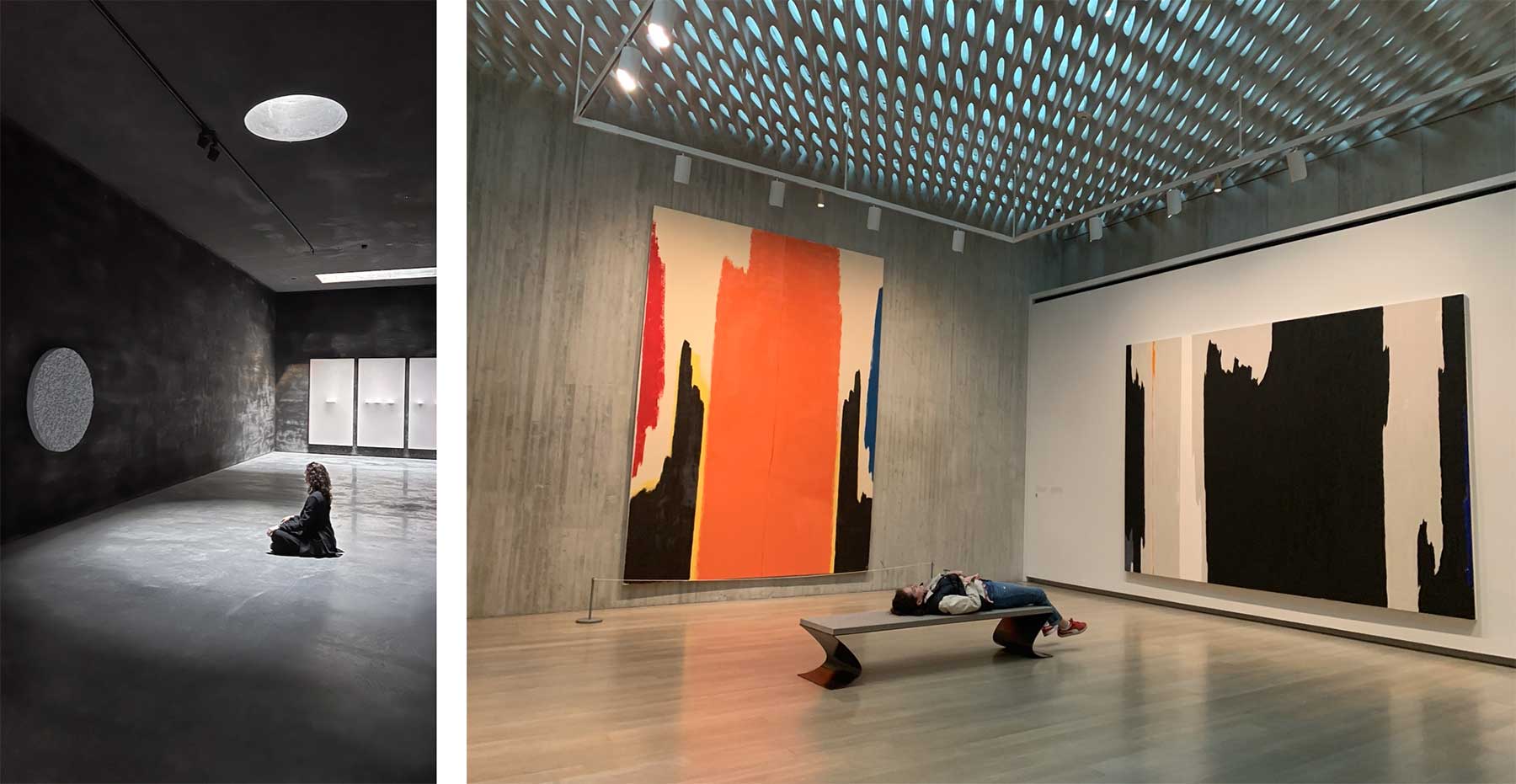
[Photo Credits: Vera Iconica Architecture, Inc.]
Spiritual Architecture in Our Lives Today
Considering our daily, modern life, churches, mosques, temples, and synagogues, might I add art museums, yoga studios, and meditation or healing centers, are designed as places to visit, not to live in day in and day out. It compels me to wonder why important spiritual experiences in our lives are detached from where we live and work on a daily basis. While the most diligent of us may visit these public spaces with a ritual-like frequency—logically resulting in a bigger impact on our lives—do we carve room for our rituals of celebration and connection in the space with the utmost ability to influence us, that is our own homes?
If proximity drives frequency, imagine what can be done with thoughtful attention to our behaviors when designing our homes! At Vera Iconica, we subscribe to the concept of “nudge architecture,” which entails strengthening the likelihood of a behavior through the subtle or not subtle elements of your surroundings. The refinement of bringing dedicated space and formality to an everyday behavior has the power of making that behavior a ritual. When a behavior becomes a ritual, we are more likely to immerse ourselves in the moment and experience it with our full awareness in a way that can be poignant, restful, and even sacred.
No matter your surroundings, soaking in a mountain view, retreating from the world to our yoga mat, and gathering to share a meal with our most cherished people are sacred, even spiritual, moments. As the modernist Mies van der Rohe has said, “Let us give the spirit opportunity for existence.” And perhaps a dedicated space.
Citations & Recommendations for Further Reading:
- Transcending Architecture: Contemporary Views on Sacred Space, Edited by Julio Bermudez
- Thin Place Design: Architecture of the Numinous by Phillip James Tabb
- The Architecture of Happiness, by Alain de Botton
- Places of the Soul: Architecture & Environmental Design as Healing Art, by Christopher Day
- Spiritual & Numinous Moments in Architecture: The Move from Ostentatious Fads to Architecture that Touches Our Soul, by Veronica Schreibeis Smith https://www.globalwellnesssummit.com/trends-2021/spiritual-and-numinous-moments-in-architecture/
Terminology
Sacred Place: 1) A special place where divine power manifests itself 2) Communion with the divine 3) Often regarded as a mirror of what the human world should look like as it relates to the divine.
Transcendent Architecture: Spaces that encourage us to transcend our normal state of consciousness
Sacral Architecture: Also known as sacred architecture or religious architecture, is a religious architectural practice concerned with the design and construction of places of workship or sacred or intentional space, such as churches, mosques, stupas, synagogues, and temples.
Numinous: having a strong religious or spiritual quality; indicating or suggesting the presence of a divinity.
Noetic: relating to mental activity or the intellect.
Ineffable: Too great or extreme to be expressed or described in words.
Amy Tribo
Spanning 20 years, Amy's background includes construction management, estimating, project development, and client service, with project experience in hospitality, commercial, and interiors. She has a passion for crunching numbers, solving problems, and building strong relationships and loves seeing the outcomes shine in breakthrough projects. As Director of Operations, she is your point-of-contact for new projects, contract & billing questions, and overall team performance. She ensures your project tracks on time and on budget.